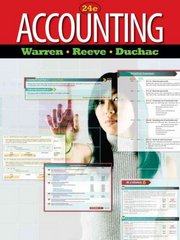pol nts skipped eBoDk Prim Amazon Beverages produces and bottles a line of soft drinks using exotic fruits from Latin America and Asia. The manufacturing Check my work process entails mixing and adding juices and coloring ingredients at the bottling plant, which is a part of Mixing Division. The finished product is packaged in a company-produced glass bottle and packed in cases of 24 bottles each. Because the appearance ofthe bottle heavily influences sales volume, Amazon developed a unique bottle production process at the company's container plant which is a part of Container Division. Mixing Division uses all ofthe container plant's production. Each division [Mixing and Container) is considered a separate profit center and evaluated as such. As the new corporate controller, you are responsible for determining the proper transfer price to use for the bottles produced for Mixing Division. At your request, Container Division's general manager asked other bottle manufacturers to quote a price for the number and sizes demanded by Mixing Division, These competitive prices follow, Volume 54B, 896 equivalent ca sesa 1,836,688 1,626,068 Total Price $ 4,544,939 8,163,689 11,616,800 5 An equivalent case represents 24 bottles, Container Division's cost analysis indicates that it can produce bottles at these costs. |)..'I .._H r...\" n"; Price per Case use 7.68 6.80 Cost per Check my work 8 Container Division's cost analysis indicates that it can produce bottles at these costs. Cost per Volume Total Cost Case 540, 000 equivalent cases $3, 856, 000 $7. 14 4 1, 080, 000 6,772,000 6.27 points 1, 620, 000 9, 688,000 5.98 Skipped These costs include fixed costs of $940,000 and variable costs of $5.40 per equivalent case. These data have caused considerable corporate discussion as to the proper price to use in the transfer of bottles from Container Division to Mixing Division. This interest is eBook heightened because a significant portion of a division manager's income is an incentive bonus based on profit center results. Print Mixing Division has the following costs in addition to the bottle costs. Cost per Volume Total Cost Case 540,000 equivalent cases $1, 940, 000 $3.59 1, 080, 000 2, 740, 000 2.54 1, 620, 000 3,540, 000 2. 19 The corporate marketing group has furnished the following price-demand relationship for the finished product: Total Sales Sales Price Sales Volume Revenue per Case 540,000 equivalent cases $11, 556, 000 $21. 40 1 non non in anCheck my work 8 140, WUD CHUIValCIL LOSES P J. J3 1, 080, 000 2, 740, 000 2.54 1, 620, 000 3, 540, 000 2. 19 The corporate marketing group has furnished the following price-demand relationship for the finished product: 4 points Total Sales Sales Price Sales Volume Revenue Skipped per Case 540, 000 equivalent cases $11, 556,000 $21.40 1, 080, 000 20,952,000 19.40 1, 620, 000 26, 568, 000 16.40 eBook Print Required: a. Amazon Beverages has used market price-based transfer prices in the past. Using the current market prices and costs and assuming a volume of 1.62 million cases. Calculate operating profits for Container Division, Mixing Division, Amazon Beverages. b-1. Calculate operating profits for Container, Mixing and Amazon Beverages for volumes of 540,000, 1,080,000 and 1,620,000 cases. b-2. Which volume of production is the most profitable for Container, Mixing and Amazon Beverages? Complete this question by entering your answers in the tabs below. Reg A Req B1 Req B2 Amazon Ravaranae hac ucad market price-hacad tranefor prices in the nact Ileing the current market prices and macte and Mc









